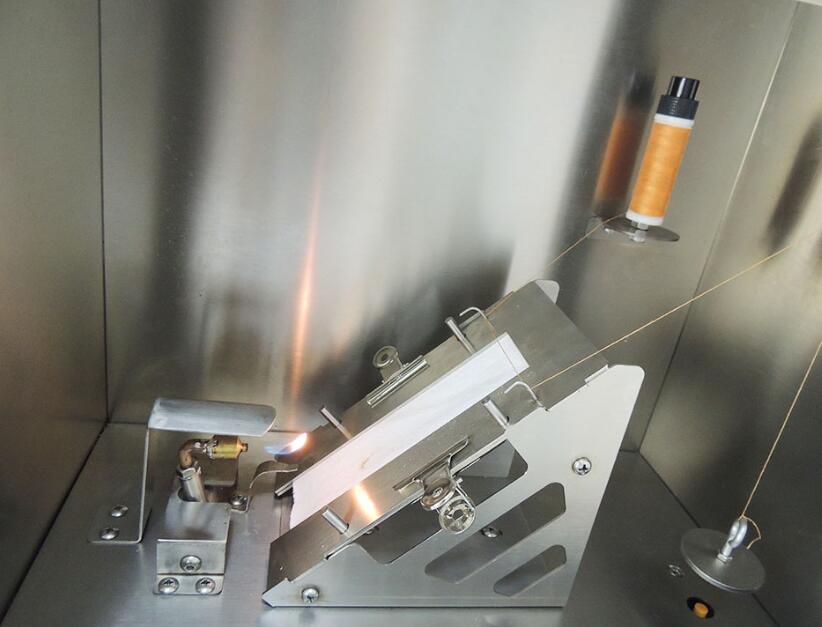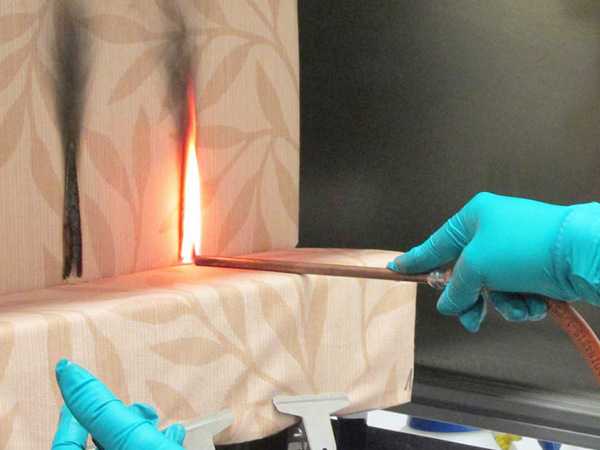
NewsInformation Center
What is the ignition resource of the 45° flammability test?
2023/05/26
The 45° flammability test is a standard test method used to test the combustion properties of materials at an inclined angle. In this test, the material is placed on an inclined platform, and then an ignition source is placed above the material at a certain height, through which the material is ignited and the burning performance of the material is observed. This test method is widely used in the fields of construction materials, automobiles, aircraft, electronic equipment and household appliances to evaluate the fire safety performance of materials.



In the 45° flammability test, the choice of ignition source is very important, because the characteristics of the ignition source will affect the accuracy and repeatability of the test results. According to the international standard ISO 12136, the ignition source for the 45° flammability tester is usually a 2 mm diameter welding wire. Before the test begins, the wire is ignited and then placed in contact with the bottom of the material to be tested to ignite the material. The diameter and shape of this wire ignition source is standardized to ensure consistent and comparable testing. The wire ignition source will continue to burn for the duration of the test to provide a continuous source of ignition and to ensure that the material will continue to burn. It is important to note that this test method is only applicable to test the combustibility of the material under 45 degree angle tilt conditions and not under other test conditions.
The source of ignition of the welding wire is chosen for several reasons:
Weight and size control:
The weight and size of the welding wire is precisely controlled, which ensures that the quality of the ignition source is consistent from test to test, thus ensuring reproducible test results.
The weight and size of the welding wire is precisely controlled, which ensures that the quality of the ignition source is consistent from test to test, thus ensuring reproducible test results.
Control of heat:
he quality and size of the wire also controls the heat output of the ignition source, which is important for comparing and evaluating different types of materials.
he quality and size of the wire also controls the heat output of the ignition source, which is important for comparing and evaluating different types of materials.
Safety:
The small size and low mass of the wire ignition source reduces the safety risk of the ignition source to the test operator and the laboratory.
The small size and low mass of the wire ignition source reduces the safety risk of the ignition source to the test operator and the laboratory.
Conformity with international standards:
Wire ignition sources have been used extensively in different national and regional combustion test standards, which ensures comparability and credibility of test results.
Wire ignition sources have been used extensively in different national and regional combustion test standards, which ensures comparability and credibility of test results.
It is important to note that the height of the ignition source is also very important when conducting the 45° flammability test, as this affects the distance and angle between the ignition source and the specimen. According to the standard requirements, the ignition source should be at a height of 20 mm above the surface of the specimen and at an angle of 45 degrees to the surface of the specimen. This angle and height is chosen to ensure that the ignition source generates enough heat on the specimen surface to ignite the specimen without damaging the specimen surface.

In addition to wire ignition sources, there are other ignition sources that can be used for the 45° flammability test, such as electric wire ignition sources and gas flame ignition sources. The choice of these ignition sources depends on the purpose and requirements of the test, but it should be noted that the choice of different ignition sources may have an impact on the test results, so adequate comparison and verification are required.
In conclusion, the 45° flammability test is an important combustion test method, and the choice of ignition source has an important impact on the accuracy and repeatability of the test results. Solder wire ignition source is a commonly used ignition source, and its weight and size can be precisely controlled to ensure repeatability and comparability of test results. When conducting the test, it is necessary to select the appropriate ignition source and operate according to the standard requirements to ensure the accuracy and reliability of the test results.
Previous: What is the difference between Loi and the oxygen index test?
N e x t : What is the test method for flammability test?



